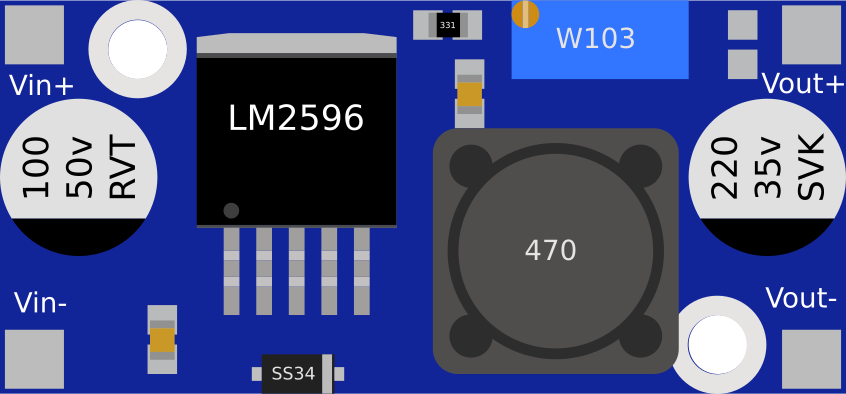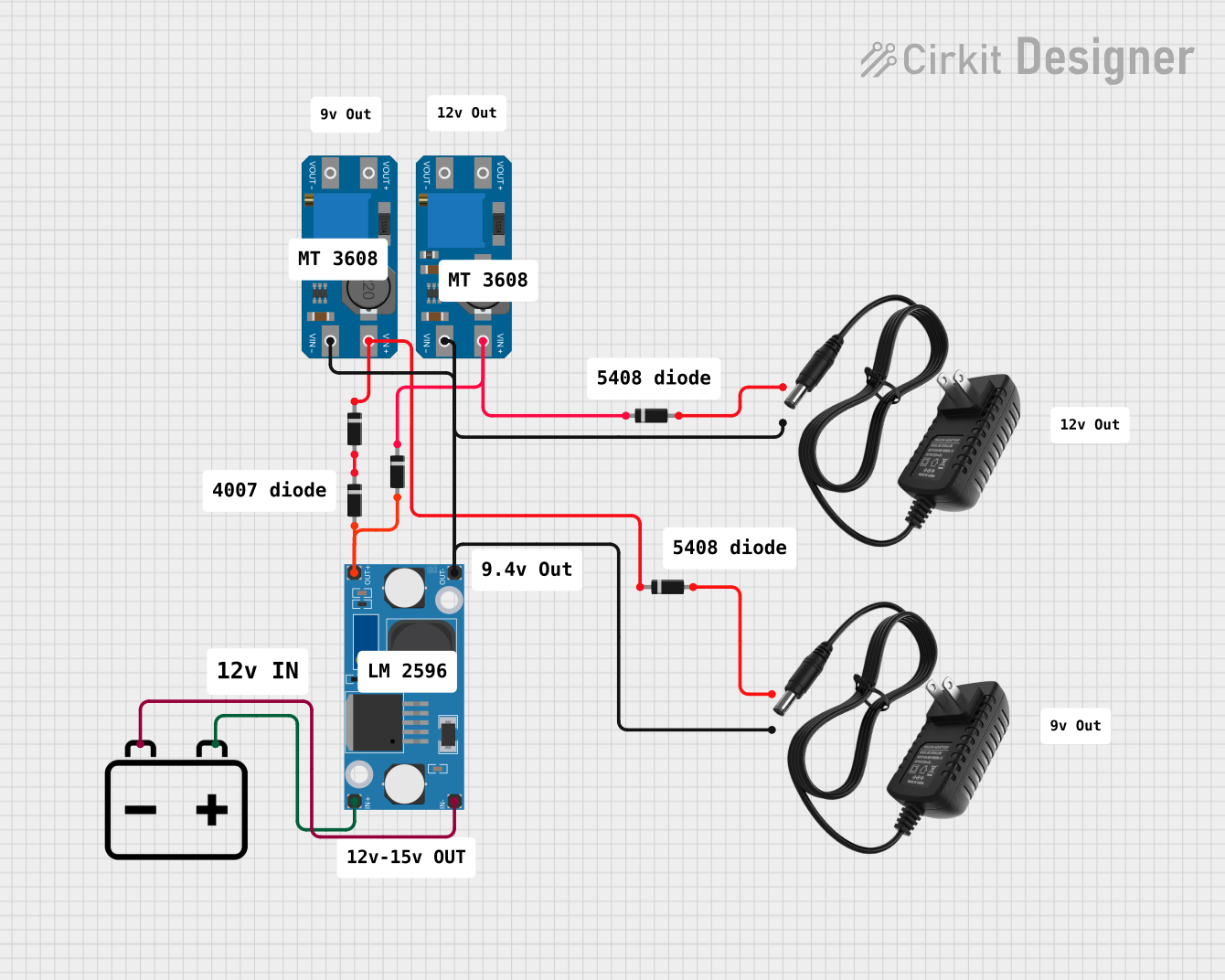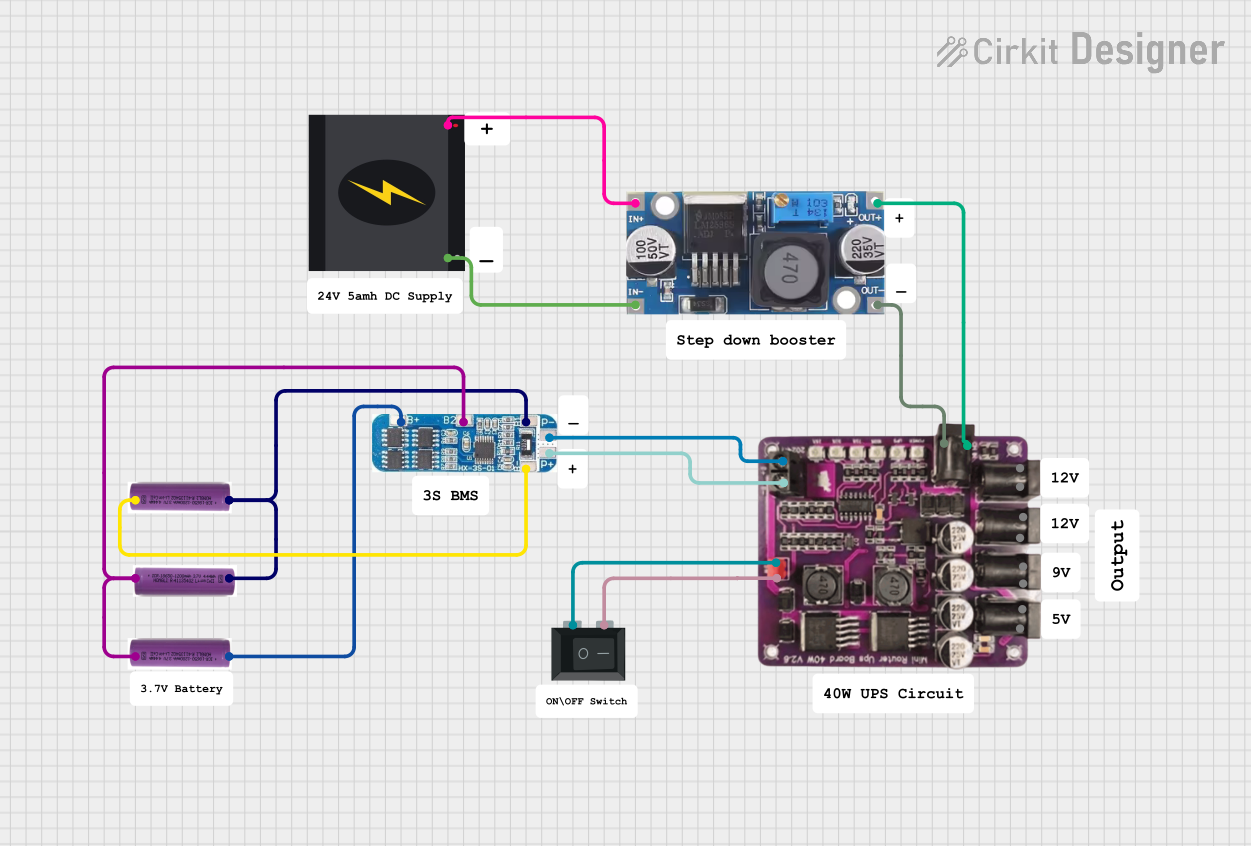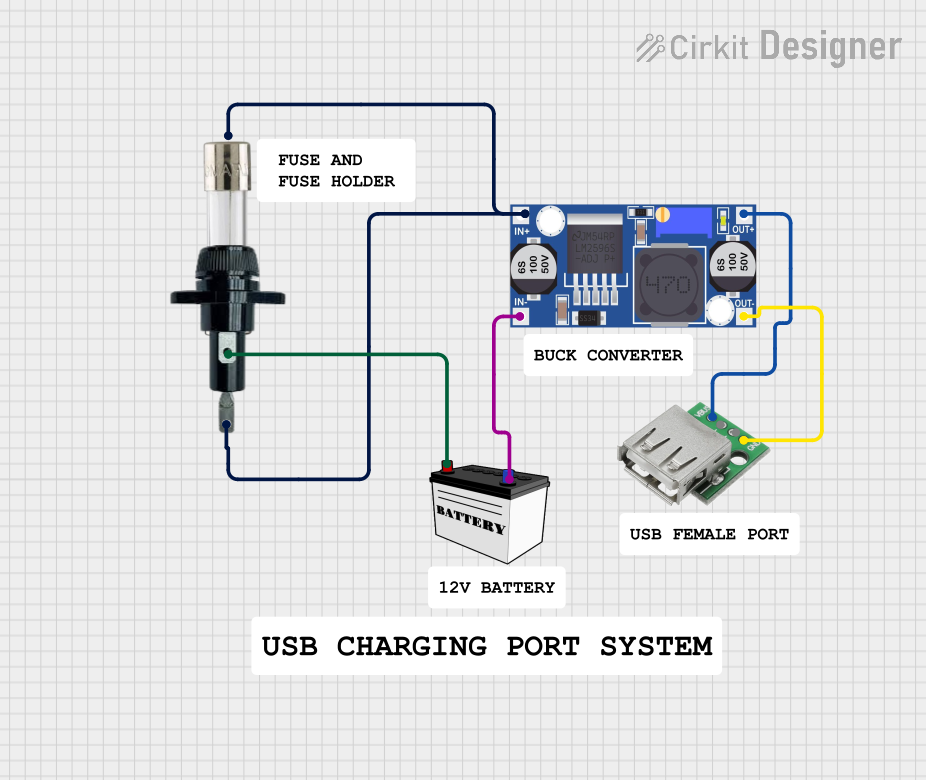
How to Use LM2596-Step-Down-Converter: Examples, Pinouts, and Specs

 Design with LM2596-Step-Down-Converter in Cirkit Designer
Design with LM2596-Step-Down-Converter in Cirkit DesignerIntroduction
The LM2596 Step-Down Converter is a DC-DC voltage regulator designed to efficiently step down a higher input voltage to a lower output voltage. It is widely used in power supply applications due to its high efficiency, adjustable output voltage, and ease of use. This component is particularly suitable for battery-powered devices, embedded systems, and other applications requiring stable and efficient voltage regulation.
Explore Projects Built with LM2596-Step-Down-Converter

 Open Project in Cirkit Designer
Open Project in Cirkit Designer
 Open Project in Cirkit Designer
Open Project in Cirkit Designer
 Open Project in Cirkit Designer
Open Project in Cirkit Designer
 Open Project in Cirkit Designer
Open Project in Cirkit DesignerExplore Projects Built with LM2596-Step-Down-Converter

 Open Project in Cirkit Designer
Open Project in Cirkit Designer
 Open Project in Cirkit Designer
Open Project in Cirkit Designer
 Open Project in Cirkit Designer
Open Project in Cirkit Designer
 Open Project in Cirkit Designer
Open Project in Cirkit DesignerCommon Applications:
- Power supply for microcontrollers and embedded systems
- Battery-powered devices
- LED drivers
- Industrial automation systems
- DIY electronics projects
Technical Specifications
Key Technical Details:
- Input Voltage Range: 4.5V to 40V
- Output Voltage Range: 1.23V to 37V (adjustable via potentiometer)
- Output Current: Up to 3A (with proper heat dissipation)
- Efficiency: Up to 92%
- Switching Frequency: 150 kHz
- Operating Temperature: -40°C to +125°C
- Built-in Thermal Shutdown and Overcurrent Protection
Pin Configuration and Descriptions:
The LM2596 module typically has 4 or 5 pins depending on the design. Below is a table describing the common pinout:
| Pin Name | Description |
|---|---|
| VIN | Input voltage pin. Connect the higher input voltage (4.5V to 40V). |
| GND | Ground pin. Connect to the ground of the circuit. |
| VOUT | Output voltage pin. Provides the regulated output voltage (1.23V to 37V). |
| EN (optional) | Enable pin. Used to enable or disable the module (active high). |
| ADJ | Adjustment pin. Connects to the onboard potentiometer to set the output voltage. |
Note: Some modules may not expose the
ENpin, as it is internally tied to the input voltage.
Usage Instructions
How to Use the LM2596 in a Circuit:
Connect Input Voltage:
- Connect the positive terminal of the input voltage source to the
VINpin. - Connect the negative terminal of the input voltage source to the
GNDpin. - Ensure the input voltage is within the range of 4.5V to 40V.
- Connect the positive terminal of the input voltage source to the
Set Output Voltage:
- Use the onboard potentiometer to adjust the output voltage.
- Measure the output voltage across the
VOUTandGNDpins using a multimeter while adjusting the potentiometer.
Connect the Load:
- Connect the positive terminal of the load to the
VOUTpin. - Connect the negative terminal of the load to the
GNDpin.
- Connect the positive terminal of the load to the
Power On:
- Turn on the input power supply and verify the output voltage is as desired.
Important Considerations:
- Heat Dissipation: The LM2596 can handle up to 3A of current, but proper heat dissipation (e.g., a heatsink) is required for high current loads.
- Input Voltage: Ensure the input voltage is at least 1.5V higher than the desired output voltage for proper regulation.
- Capacitors: Use appropriate input and output capacitors (e.g., 100 µF electrolytic capacitors) to ensure stable operation.
- Polarity: Double-check the polarity of the connections to avoid damaging the module.
Example: Using LM2596 with Arduino UNO
The LM2596 can be used to power an Arduino UNO by stepping down a 12V input to 5V. Below is an example circuit and Arduino code:
Circuit:
- Connect a 12V DC power supply to the
VINandGNDpins of the LM2596. - Adjust the potentiometer to set the output voltage to 5V.
- Connect the
VOUTpin to the Arduino UNO's 5V pin. - Connect the
GNDpin to the Arduino UNO's GND pin.
Arduino Code:
// Example code to blink an LED using Arduino UNO powered by LM2596
const int ledPin = 13; // Pin connected to the onboard LED
void setup() {
pinMode(ledPin, OUTPUT); // Set the LED pin as an output
}
void loop() {
digitalWrite(ledPin, HIGH); // Turn the LED on
delay(1000); // Wait for 1 second
digitalWrite(ledPin, LOW); // Turn the LED off
delay(1000); // Wait for 1 second
}
Note: Ensure the LM2596 output is stable at 5V before connecting it to the Arduino UNO.
Troubleshooting and FAQs
Common Issues and Solutions:
No Output Voltage:
- Check the input voltage and ensure it is within the specified range.
- Verify all connections, especially the polarity of the input and output.
Output Voltage is Incorrect:
- Adjust the potentiometer to set the desired output voltage.
- Ensure the input voltage is at least 1.5V higher than the desired output voltage.
Module Overheating:
- Reduce the load current or add a heatsink to the LM2596 module.
- Ensure proper ventilation around the module.
Load Not Powering On:
- Verify the output voltage with a multimeter.
- Check the load's power requirements and ensure they are within the module's limits.
FAQs:
Q: Can the LM2596 step up voltage?
A: No, the LM2596 is a step-down (buck) converter and cannot increase the input voltage.Q: What is the maximum current the LM2596 can handle?
A: The LM2596 can handle up to 3A, but proper heat dissipation is required for high current loads.Q: Can I use the LM2596 to power a Raspberry Pi?
A: Yes, but ensure the output voltage is set to 5V and the current requirements of the Raspberry Pi are met.Q: Is the output voltage stable?
A: Yes, the LM2596 provides a stable output voltage when used with appropriate input and output capacitors.
By following this documentation, you can effectively use the LM2596 Step-Down Converter in your projects.